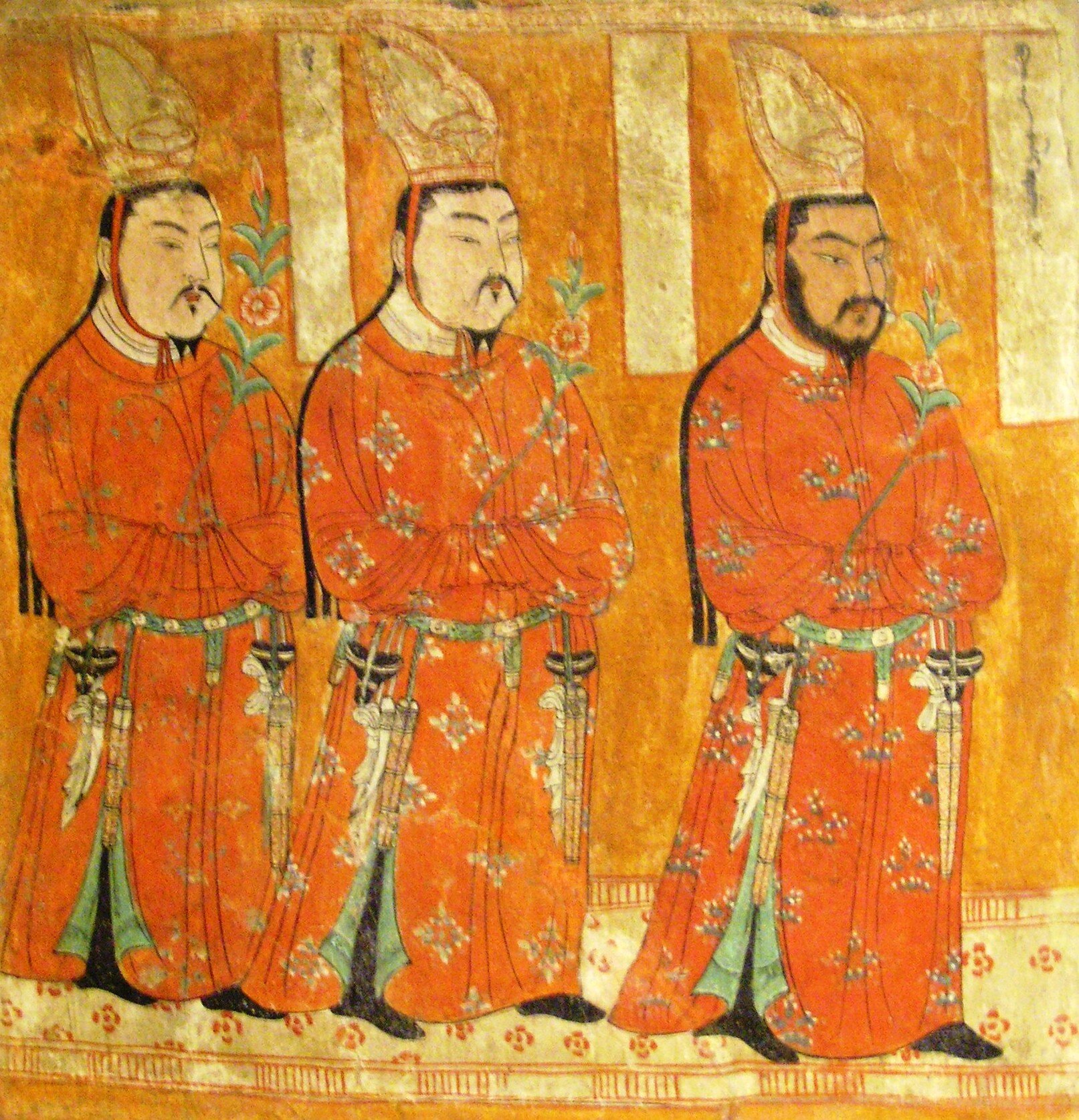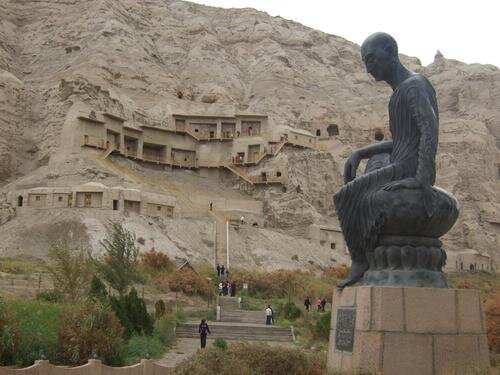Ep. 255 | The History of Xinjiang (Part 12)
In this 12th and final episode, we’ll look at Xinjiang from 1885 to 1949. More unrest, well intentions gone wrong, Soviet subterfuge, and two East Turkestan Republics. And after all the events that happened going back to Qianlong, Xinjiang finally goes out with a whimper in 1949 with the Communist PLA takeover.
We’ll also look at the rogues’ gallery of Xinjiang governors/warlords who ran the place from 1912 to 1949. I hope you enjoyed this twelve-part series.
If you want to learn more you’re in luck. The number of books (including serious academic works), scholarly papers, web resources, and videos that are out there, should be able to satisfy you to no end.
Listen On Your Favorite Podcast Player
Terms in Episode
| Pinyin/Term | Chinese | English/Meaning |
|---|---|---|
| Āgǔ Bái | 阿古柏 | Yaqub Beg 1820-1877 |
| Burhan Shahidi | 包尔汉·沙希迪 | 1894-1989, Last KMT governor of Xinjiang. Served the country and the Party in all kinds of roles up to his death |
| Běiyáng government | 北洋政府 | The government based in Beijing that was led by a clique of military strongmen, led by Yuan Shikai |
| Chóngqìng | 重庆 | Municipality in China formerly part of Sichuan province. |
| Guómíndǎng | 国民党 | The Nationalist Party |
| Gānsù | 甘肃 | Province in Western China |
| Gē Lǎo Huì | 哥老会 | the Brothers and Elders Society, a late Qing era secret society bent on getting rid of the Manchu's |
| Huí | 回族 | One of China's 56 official ethnic minorities. The Hui were Muslims of Han descent |
| Hāmì Bàodòng | 哈密暴动 | Hāmì or Kumul Rebellion, 1931 to 1934, directed against Jin Shuren. Ma Zhongying sided with the rebels in Kumul who wanted to restore their khanate |
| Jīn Shùrén | 金树仁 | Successor to Yang Zengxin in Xinjiang. Ran the place, also with an iron fist, from 1928-1933. |
| Kāshí / Kāshígé'ěr | 喀什,喀什葛尔 | One of the greatest cities of the Golden Age of the Silk Road Era. Also a great center for the development of Islam in Xinjiang |
| Manchukuo | 满洲国 | The state and later empire setup in Manchuria by the Japanese. Puyi served as emperor |
| Masud Sabri | 麦斯武德·沙比尔 | Governor of Xinjiang from 1947-1949. A noted Uyghur intellectual of his time. Lived from 1886-1952 |
| Mukden Incident | 九一八事变 | Also known as the Manchurian Incident, occurred on 9/18/1931. Used as a pretext to shift Japanese aggression in China into overdrive |
| Máo Zémín | 毛泽民 | The younger brother to Máo Zédōng. He was executed on September 27, 1943 |
| Mǎ Bùfāng | 马步芳 | 1903-1975, one of the many Ma Clique warlords who ran northwest China during the Republican Era. Ma Bufang's story was mostly written in Qinghai. He was the older brother of Ma Buqing |
| Mǎ Bùqīng | 马步青 | 1901-1977, younger brother of Ma Bufang, also a major figure in Qinghai. The two brothers were sons of Ma Qi (see below) |
| Mǎ Clique | 西北三吗 / 马家军 | Ma is a common Hui Muslim name. But these Ma's were a very large family who served as warlords in northwest China during the Republican era |
| Mǎ Fúxīng | 马福兴 | Yang Zengxin's man in Kashgar from 1916-1924. His military exploits went back all the way to the Boxer Rebellion |
| Mǎ Hóngbīn | 马鸿宾 | 1884-1960, another Ma Clique member whose career was based in Ningxia and Gansu |
| Mǎ Hóngkuí | 马鸿逵 | 1892-1970, Ma Clique leader who ran the province of Ningxia from 1931 to 1948 |
| Mǎ Qí | 马麒 | 1869-1931, Hui general and early Ma Clique leader, based in Gansu and Qinghai, helped the Qing put down the Dungans and fight back against the foreigners during the Boxer Rebellion |
| Mǎ Zhòngyīng | 马仲英 | 1910-?, a.k.a. "The Baby General", ethnic Hui, born Ma Buying. Loyal to the KMT, fought for them in Xinjiang. Disappeared in 1936 on a trip to the USSR. |
| Péng Déhuái | 彭德怀 | Legendary PLA general from Hunan. Not too politically adept. Lived from 1898-1974 |
| Pǔyí | 溥仪 | The Last Emperor of the Qing Dynasty. Served as a puppet figurehead for the Japanese in Manchukuo |
| Qīng | 清朝 | Manchu dynasty that ran in China 1644-1911 |
| Shèng Shìcái | 盛世才 | Ruler of Xinjiang from 1933 to 1944. Known for his close cooperation with the Soviet Union |
| Tǔlǔfān (Turpan) | 吐鲁番 | City in northeast Xinjiang, south of Hami |
| Wáng Zhèn | 王震 | 1908-1993, a major figure in CCP and PLA history. PRC Vice President 1988-1993. Head of military government in Xinjiang 1950-1952. A hated figure amongst the Uyghurs |
| Wú Zhōngxìn | 吴忠信 | The KMT's, Civil and Military Governor of Xinjiang from August 1944 to March 1946. |
| Wūlǔmùqí | 乌鲁木齐 | Urumqi,present day capital of Xinjiang. Also one of the great trading entrepôts of the Silk Road era |
| Xīnjiāng | 新疆 | The area that is now contained in the Xinjiang Uyghur Autonomous Region in China. Also known by many names prior to 1884 |
| Yuán Shìkǎi | 袁世凯 | 1859-1916, Late Qing military strongman and extremely influential leader during the first years of the Republican period |
| Yáng Zēngxīn | 杨增新 | Yunnan-born military man who ruled Xinjiang with an iron fist from 1912 to 1928 |
| Yán’ān | 延安 | City on northern Shaanxi. The CCP setup their wartime base there after completing the Long March |
| Yīlí Valley | 伊犁 | Region in northernmost Xinjiang on the Kazakhstan border |
| Zhāng Zhìzhōng | 张治中 | 1895-1969, Military superstar during the Republican era. Later defected to the Communists. Governor of Xinjiang from March 1946 to June 1947. |
| Zhāng Zuòlín | 张作霖 | 1875-1928, The Manchurian Warlord, a great and historic figure during the Warlord Era |
| Zhūngá'ěr | 准噶尔 | The Zunghar Mongols |
| Zhǔnbù | 准部 | Zungharia, the northern portion of Xinjiang |
| Zuǒ Zōngtáng | 左宗棠 | 1812-1885, Also known as General Tso. Great statesman and soldier during the mid 1800's. |


























In this 12th and final episode, we’ll look at Xinjiang from 1885 to 1949. After all the events that happened going back to Qianlong, Xinjiang finally goes out with a whimper in 1949 with the Communist PLA takeover.